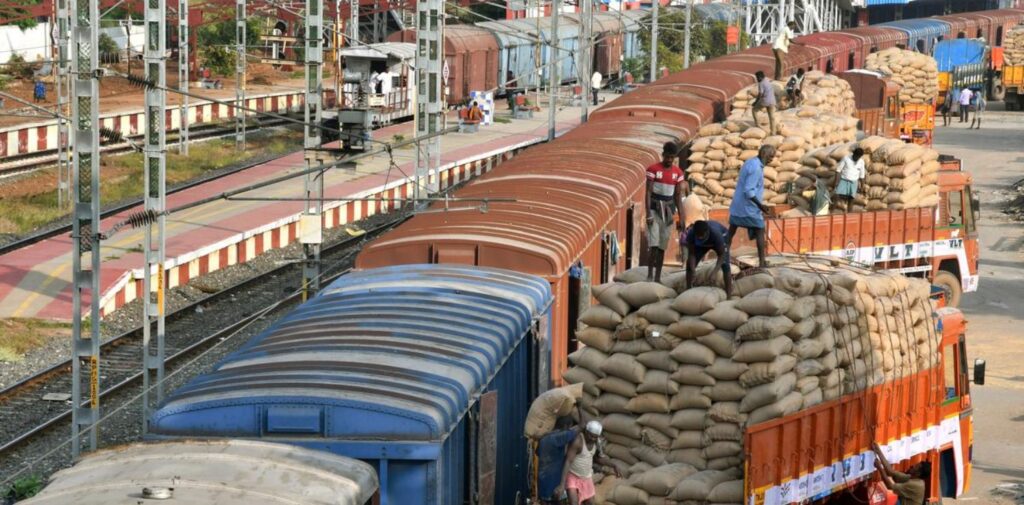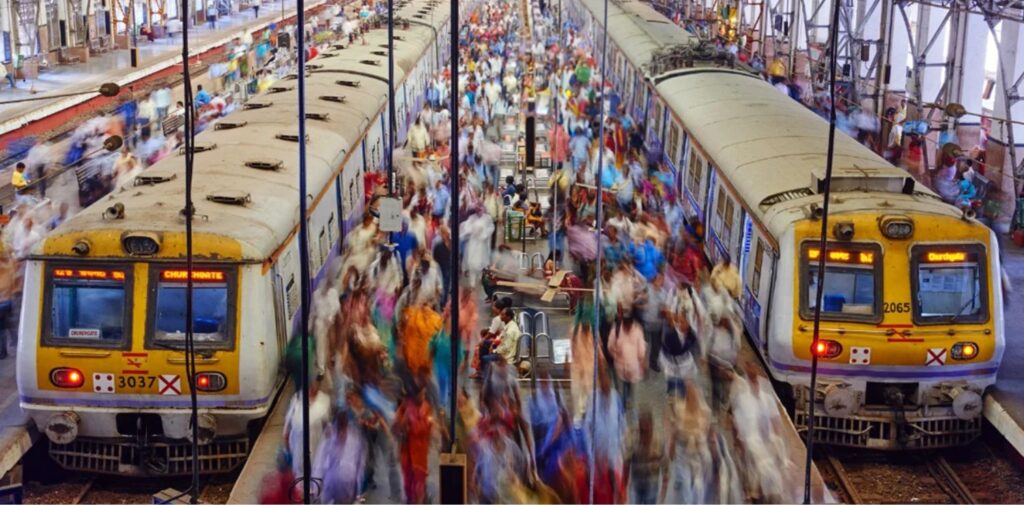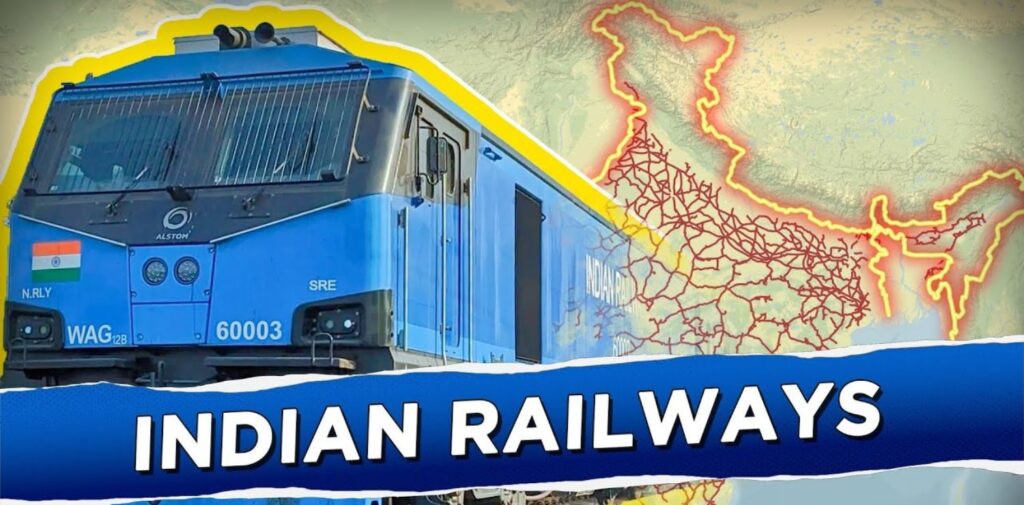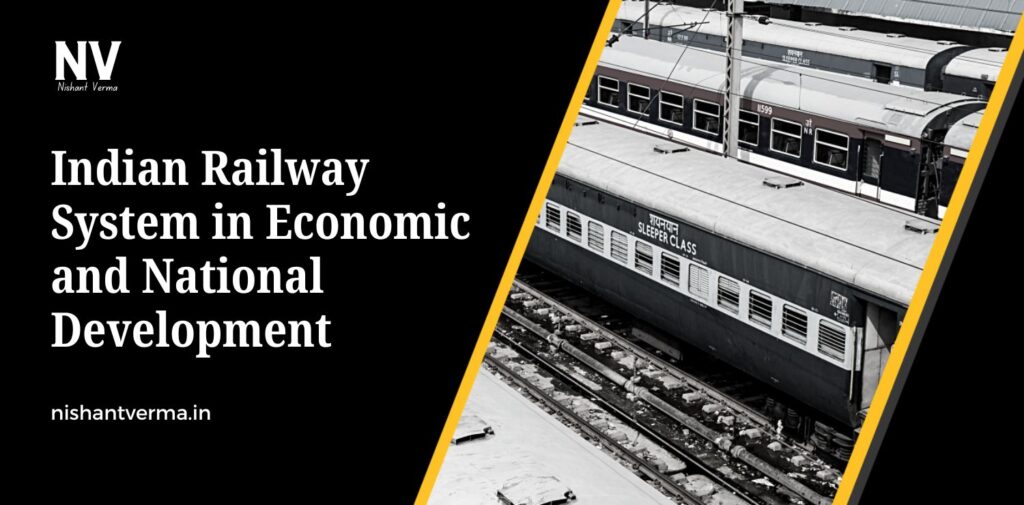The Indian Railway system is one of the largest and most extensive railway networks in the world. Established during British colonial rule, it has grown to become an integral part of India’s economy and national development. The railway network not only plays a significant role in transporting goods and people but also contributes heavily to India’s economic growth and social integration. In this article, we will explore the key roles of the Indian Railway system in driving economic and national development.

A Lifeline for India’s Economy
The Indian Railway system is often referred to as the “lifeline” of the country. It connects even the remotest corners of India, providing essential transportation services for millions of people every day. With over 67,000 kilometers of track and more than 7,000 stations, Indian Railways transports a huge volume of passengers and freight every year. Its size and reach make it a central player in India’s economic activities.
1. Facilitating the Movement of Goods
The transportation of goods is one of the primary functions of Indian Railways. It plays a vital role in moving raw materials, manufactured goods, and agricultural products across the country. India’s railway system is responsible for the transportation of coal, iron ore, agricultural produce, and industrial goods, which are essential for the functioning of industries and the overall economy.
For example, the movement of coal by railways is crucial for the power generation sector. Many thermal power plants in India are located far from coal-producing regions, and the railways ensure that this coal reaches the plants on time, supporting energy production and industrial activity.
Additionally, the railways help in transporting agricultural products from rural areas to urban markets, thus supporting the agriculture sector, which is a backbone of India’s economy. It also ensures the steady supply of food items, such as grains, vegetables, and fruits, to different parts of the country, keeping prices stable and improving food security.
2. Boosting Trade and Commerce
Indian Railways plays a significant role in boosting trade and commerce both within India and with neighboring countries. The railway network connects major ports like Mumbai, Kolkata, and Chennai, facilitating the easy movement of goods to and from international markets. Railways also help in moving export goods like textiles, chemicals, and machinery, thus contributing to India’s foreign trade.
The development of railway corridors like the Dedicated Freight Corridors (DFC) is further enhancing the movement of goods, ensuring faster and more efficient transportation. These improvements in logistics are key to improving India’s competitiveness in the global market.
3. Job Creation and Employment Opportunities
The Indian Railway system is one of the largest employers in the country, providing direct and indirect employment to millions of people. From station staff to engineers, technicians, and safety officers, the railway network offers a wide range of jobs. The employment generated by the railway sector is critical, especially in rural and semi-urban areas, where job opportunities may be limited.
Apart from direct jobs in railways, the infrastructure development associated with railways, including stations, tracks, bridges, and freight facilities, also creates numerous indirect jobs in construction, supply chains, and services. This helps reduce unemployment and contributes to economic stability in many regions of India.
4. Promoting Regional Development
The railway system has played a key role in the development of regions that were once isolated. By connecting remote areas with major urban centers, Indian Railways has facilitated the movement of people and goods, which has helped in the growth of industries and commerce in these regions. Many industrial hubs and towns have emerged along railway corridors due to the availability of transportation for raw materials and finished goods.
For example, the industrial growth in regions like Howrah, Jamshedpur, and Vishakhapatnam can be directly attributed to the railway system, which allowed the transportation of iron, steel, and coal to support these industries. Additionally, the easy connectivity of smaller towns to big cities has improved access to education, healthcare, and other essential services, improving the quality of life for people in these regions.

Social Integration and National Unity
Apart from its economic role, Indian Railways also plays a significant part in social integration and national unity. India is a land of immense diversity, with hundreds of languages, cultures, and traditions. Indian Railways connects people across states, regions, and languages, contributing to social cohesion.
1. Bridging Regional Disparities
The Indian Railway system helps bridge regional disparities by providing equal access to transportation for people in rural and urban areas. It makes it possible for people from different parts of the country to travel easily for work, education, healthcare, and other purposes. This mobility fosters interaction between different cultures and regions, enhancing mutual understanding and promoting national integration.
For example, people from rural areas in Uttar Pradesh or Bihar can travel to urban centers like Delhi or Mumbai for employment opportunities, and vice versa. Similarly, the railways allow people from different cultural backgrounds to experience and appreciate the diversity of India.
2. Cultural Exchange
Through its extensive network, Indian Railways also promotes cultural exchange across regions. Passengers traveling from one part of the country to another are exposed to different languages, food, customs, and traditions. The train journeys, particularly long-distance ones, serve as a melting pot for various cultural experiences, which fosters national unity and the spirit of brotherhood.
Additionally, Indian Railways has facilitated the pilgrimages of millions of people, helping them visit holy places like Varanasi, Amritsar, and Rishikesh. These journeys have brought together people of different faiths, backgrounds, and social statuses, further strengthening the social fabric of India.
3. Promoting Tourism
Indian Railways has also played a significant role in promoting tourism, both domestic and international. Special trains like the Palace on Wheels, Deccan Odyssey, and Maharajas’ Express have attracted tourists from all over the world, showcasing India’s rich history, culture, and natural beauty. These trains help boost the tourism industry by making it easier for tourists to travel to various parts of the country in comfort and style.
Moreover, railways make it affordable for the common people to visit various parts of India, whether for leisure or religious purposes. The availability of budget-friendly trains, like the Jan Shatabdi and Matribhumi Express, has made travel accessible to a wider audience, stimulating the tourism economy and promoting regional development.
Sustainability and Future Prospects
As India moves towards becoming a developed nation, the Indian Railway system is working to improve its efficiency, sustainability, and reach. The government has launched several initiatives to modernize the railway system, including the introduction of high-speed trains, electrification of tracks, and the development of smart railway stations.
With environmental concerns becoming a global priority, Indian Railways is also focusing on making its operations more sustainable. The electrification of railway lines helps reduce dependence on fossil fuels and lowers carbon emissions. Additionally, the Indian Railways is working to enhance its infrastructure to accommodate more passengers and freight, thus meeting the growing demands of the population and the economy.

Conclusion: Indian Railway System
The Indian Railway system is far more than just a mode of transportation. It is a cornerstone of India’s economic growth and national integration. By facilitating the movement of goods, creating jobs, promoting regional development, and fostering cultural exchange, Indian Railways has played a vital role in shaping the country’s economic and social landscape. As India continues to grow, the railway system will remain an essential pillar of the nation’s progress, contributing to its overall development and uniting its people across vast distances and diverse cultures. The Indian Railway system truly deserves recognition for its indispensable role in the economic and national development of India.




